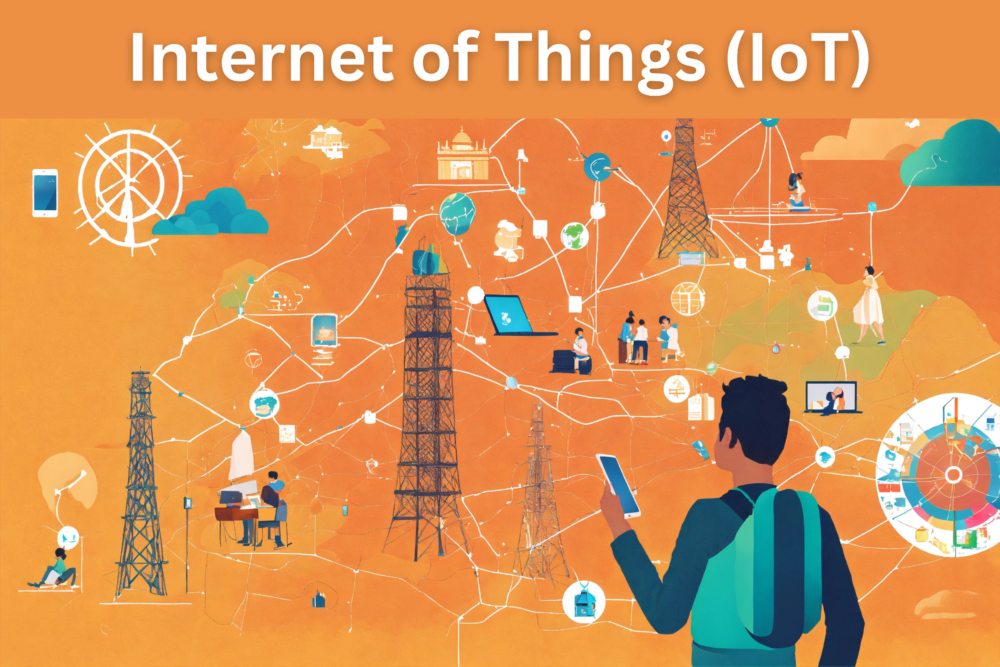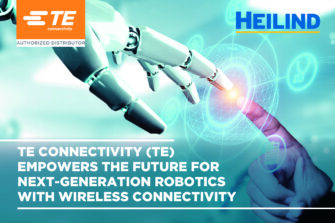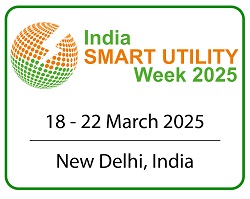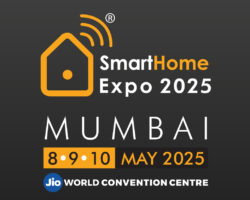Introduction
The Internet of Things (IoT) is revolutionizing the way we interact with the world. It connects everyday objects, industrial machines, and entire infrastructures to the internet, allowing them to communicate, collect data, and automate tasks. From smart homes to intelligent healthcare systems, IoT is reshaping industries and enhancing lives globally.
As businesses and consumers increasingly rely on connected devices, understanding the scope, benefits, challenges, and future trends of IoT becomes essential. This article explores the core aspects of IoT, illustrating its transformative impact with real-world examples.
What is IoT and How Does It Work?
IoT consists of four key components:
- Connected Devices & Sensors: Everyday objects equipped with sensors, ranging from smartwatches to industrial machines.
- Network Connectivity: These devices communicate via Wi-Fi, 5G, Bluetooth, or low-power networks like LoRaWAN.
- Data Processing & Analytics: Cloud computing and edge computing enable real-time data analysis and decision-making.
- User Interface & Automation: Insights from data enable automated responses or human interactions through mobile apps or control systems.
Example: A smart refrigerator detects when food items are running low and automatically places an order with an online grocery store.
Key Applications of IoT Across Industries
IoT is transforming multiple sectors, making operations smarter, safer, and more efficient.
- Smart Homes & Consumer IoT
- Devices like Amazon Alexa, Google Nest, and Ring doorbells enhance convenience and security.
- Smart lighting and thermostats adjust automatically based on user preferences.
- Healthcare & Wearable Technology
- Smartwatches track heart rate, oxygen levels, and sleep patterns.
- Remote patient monitoring devices assist in chronic disease management.
- AI-powered diagnostic tools analyze real-time health data for better treatment.
- Industrial IoT (IIoT) & Manufacturing
- Predictive maintenance prevents machinery failures using real-time data.
- IoT-powered automation optimizes production lines and reduces waste.
- Digital twins replicate physical assets for enhanced monitoring and simulation.
- Smart Cities & Infrastructure
- IoT-driven traffic lights optimize urban mobility and reduce congestion.
- Smart waste management improves efficiency by scheduling timely garbage collection.
- Environmental sensors monitor air and water quality to ensure sustainability.
- Agriculture & Smart Farming
- IoT-based irrigation systems optimize water usage based on soil conditions.
- GPS-enabled tractors automate sowing, harvesting, and spraying processes.
- AI-powered crop monitoring detects diseases early, improving yield and efficiency.
- Automotive & Connected Vehicles
- IoT enables real-time vehicle diagnostics and predictive maintenance.
- Autonomous vehicles use IoT for navigation and road safety communication.
- Ride-sharing platforms leverage IoT for optimized fleet management.
- Retail & Smart Shopping
- Smart shelves track inventory and notify retailers of stock levels.
- AI-driven IoT solutions personalize shopping experiences based on customer preferences.
- Amazon Go stores use IoT for seamless cashier-less checkout experiences.
Benefits of IoT
IoT delivers numerous advantages to businesses and consumers:
- Operational Efficiency: Real-time monitoring and automation improve productivity.
- Cost Reduction: Predictive maintenance minimizes downtime and repair expenses.
- Enhanced Security: Smart security systems provide real-time surveillance and alerts.
- Data-Driven Insights: IoT analytics help optimize decision-making processes.
- Environmental Sustainability: IoT solutions enable better energy management and waste reduction.
Example: IoT-enabled HVAC systems in commercial buildings reduce energy consumption by 30% through automated climate control.
Challenges & Risks of IoT
Despite its advantages, IoT faces several challenges:
- Cybersecurity & Privacy Risks: Weak security can expose devices to hacking and data breaches.
- Interoperability Issues: Lack of universal standards creates compatibility problems among different IoT devices.
- Scalability Concerns: As the number of connected devices grows, managing data and infrastructure becomes complex.
- High Implementation Costs: IoT adoption requires significant investment in hardware, software, and connectivity.
- Regulatory & Ethical Issues: Privacy concerns and data ownership laws vary across regions.
Example: In 2016, the Mirai botnet exploited insecure IoT devices, causing major internet disruptions.
Future Trends in IoT
As IoT continues to evolve, several trends will shape its future:
- 5G & Edge Computing: Faster and more efficient connectivity will enhance real-time data processing.
- AI & Machine Learning Integration: AI-driven automation will improve decision-making and predictive analytics.
- Blockchain for Security: Decentralized authentication will enhance IoT security.
- Sustainable IoT: Energy-efficient IoT devices will contribute to environmental conservation.
- Advancements in Healthcare IoT: AI-powered IoT solutions will revolutionize patient care and diagnostics.
- Autonomous IoT Systems: Self-operating drones, smart transportation, and robotic automation will redefine industries.
Example: Tesla’s self-driving technology relies on IoT sensors and AI for navigation and safety.
Conclusion
The Internet of Things is driving the next wave of digital transformation, unlocking new possibilities for businesses and individuals alike. While challenges such as security and interoperability remain, innovations in AI, 5G, and blockchain will ensure IoT’s continued expansion.
From smart cities and connected cars to industrial automation and healthcare advancements, IoT is creating a more connected, intelligent, and sustainable world. Staying informed about IoT developments will be key to leveraging its full potential in the years to come.












